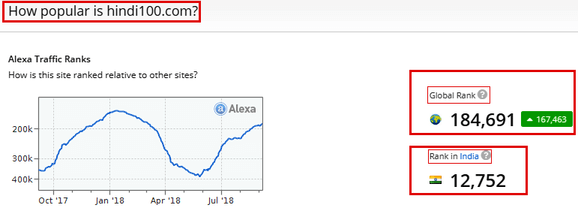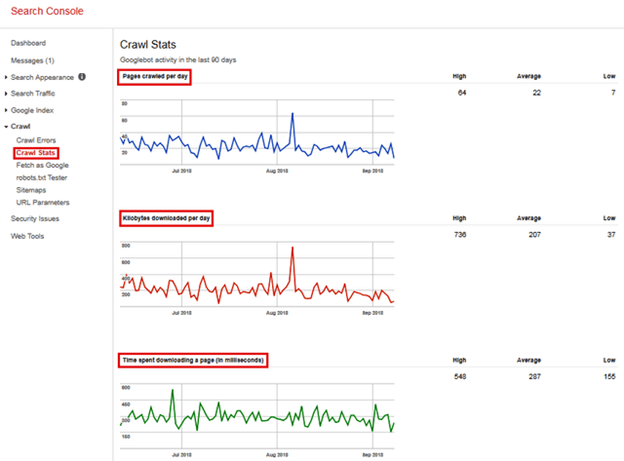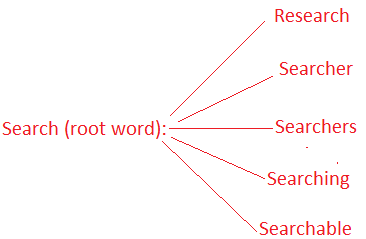Interview :: SEO
CTR stands for Click through Rate. It is calculated by dividing the number of times a link appears on a search engine result page (impression) by the number of times it is clicked by users. For example, if you have 10 clicks and 100 impressions, your CTR would be 10%.

The higher the clicks, the higher will be the CTR. A high click-through rate is essential for a successful PPC, i.e., the success of a PPC depends on the CTR. Thus, it is an important metric in PPC ads which helps you gauge the results and tells how effective your campaigns are.
PPC stands for pay-per-click. It is a type of search engine marketing in which you have to pay a fee each time your advertisement is clicked by an online user. Search engines like Google, Bing, etc., offer pay-per-click advertising on auction basis where the highest bidder gets the most prominent advertising space on the SERPs so that it gets a maximum number of clicks.
Bounce rate refers to the percentage of single-page visits in which the visitor views only one page of your website and then leaves the website from the landing page without browsing other pages. In simple words, it is the single-page sessions divided by all sessions. Google analytics tells the bounce rate of a web page or a website.

Bounce rate tells you how users are finding your site, e.g., if the bounce rate is too high, it indicates your site does not contain the relevant information, or the information is not useful for the visitors.
Alexa.com is a website and a subsidiary company of Amazon.com that provides a wide range of services out of which one is Alexa rank. This rank is a metric that ranks websites in a particular order on the basis of their popularity and website traffic in the last three months.

Alexa generally considers the unique daily visitors and average page views over a period of 3 months to calculate the Alexa rank for a website. Alexa rank is updated daily. The lower the Alexa rank, the more popular a site will be. An increase or decrease in the rank shows how your SEO campaigns are doing.
RankBrain is Google's machine-learning artificial intelligence system designed to help Google to process search results and deliver more relevant information to users. It is a part of the Google's Hummingbird search algorithm. It can learn and recognize new patterns and then revisit SERPs to provide more relevant information.
It has the ability to embed the written language into mathematical entities called vectors that Google can understand. For example, if it does not understand a sentence, it can guess its meaning with similar words or sentences and filter the information accordingly to provide accurate and relevant results to users.
The crawl stats give the overview of Googlebot activity on our website. It provides information about the Googlebot's activity on your site for the last 90 days. The crawl number tends to increase as you increase the size of your site by adding more content or web pages.
The crawl stats typically provide the following information:
- The number of pages crawled per day by Googlebot
- Kilobytes downloaded per day for crawling pages
- Time spent in downloading a page

- Update your pages regularly: You must have to frequently add new, original and quality content on the website for this.
- Server's Uptime: If a site is down for a long time, the crawlers reduce the frequency of crawling for that site. So, host your website on a reliable server with good uptime.
- Create Sitemaps: You can submit sitemap of your website to make your site discover quickly by search engine spiders. In WordPress, you can generate dynamic sitemap with Google XML sitemap plugin and submit it to Webmaster tool.
- Avoid Duplicate Content: The copied content tends to reduce the crawling rate as using plagiarized material is against the guidelines of Google. So, always provide new and unique content.
- Reduce site's loading time: The loading time should be less as the crawl has a limited time and if it spends too much time on big images included in the content, it will have no or less time to visit other pages.
- Build more links: You can build more backlinks from regularly crawled sites. Interlinking helps search engines to crawl deep pages of your site. So, whenever, you create a new page add a link in your old related pages to your new page.
- Use optimized images: The crawlers cannot read images directly so always use alt tags to provide a description that search engine crawlers can read and index.
The referral traffic refers to the visitors that come to your site from the direct links on other websites rather than from the search engine. In simple words, the visits to your domain directly from other domains are called referral traffic. For example, a site that likes your page may post a link recommending your page. The visitor on this site may click on this link and visit your site.
You can also increase referral traffic by leaving links on other blogs, forums, etc. when you put a hyperlink of your page on other websites like forums users will click and visit your webpage. Google tracks such visits as referral visits or traffic. So, it is a Google's way of reporting visits that come to your site from sources outside of search engine.
Keyword stemming is the process of finding the root word of a search query and then creating new keywords by adding prefixes, suffixes and pluralizing the root word. For example, a query "Searcher" can be broken down to the word "search" and then more words can be created by adding prefixes, suffixes or pluralizing this root word, such as research, searcher, searchers, searching, searchable, etc.

Similarly, you can add the prefix "en" to "large" to make it "enlarge" and add a suffix "ful" to "power" to make it "powerful." This practice allows you to expand your keyword list and thus helps get more traffic.
LSI stands for Latent Semantic Indexing. It is a part of the Google's algorithm which enables the search engine to understand the content of a page and the intent of the search queries. It identifies related words in content to better classify web pages and thus to deliver more relevant and accurate search results. It can understand synonyms and the relationship between words and thus can interpret web pages more deeply to provide relevant information to users. For example, if someone searches with a keyword "CAR," it will show related things such as car models, car auctions, car race, car companies and more. See the image:

